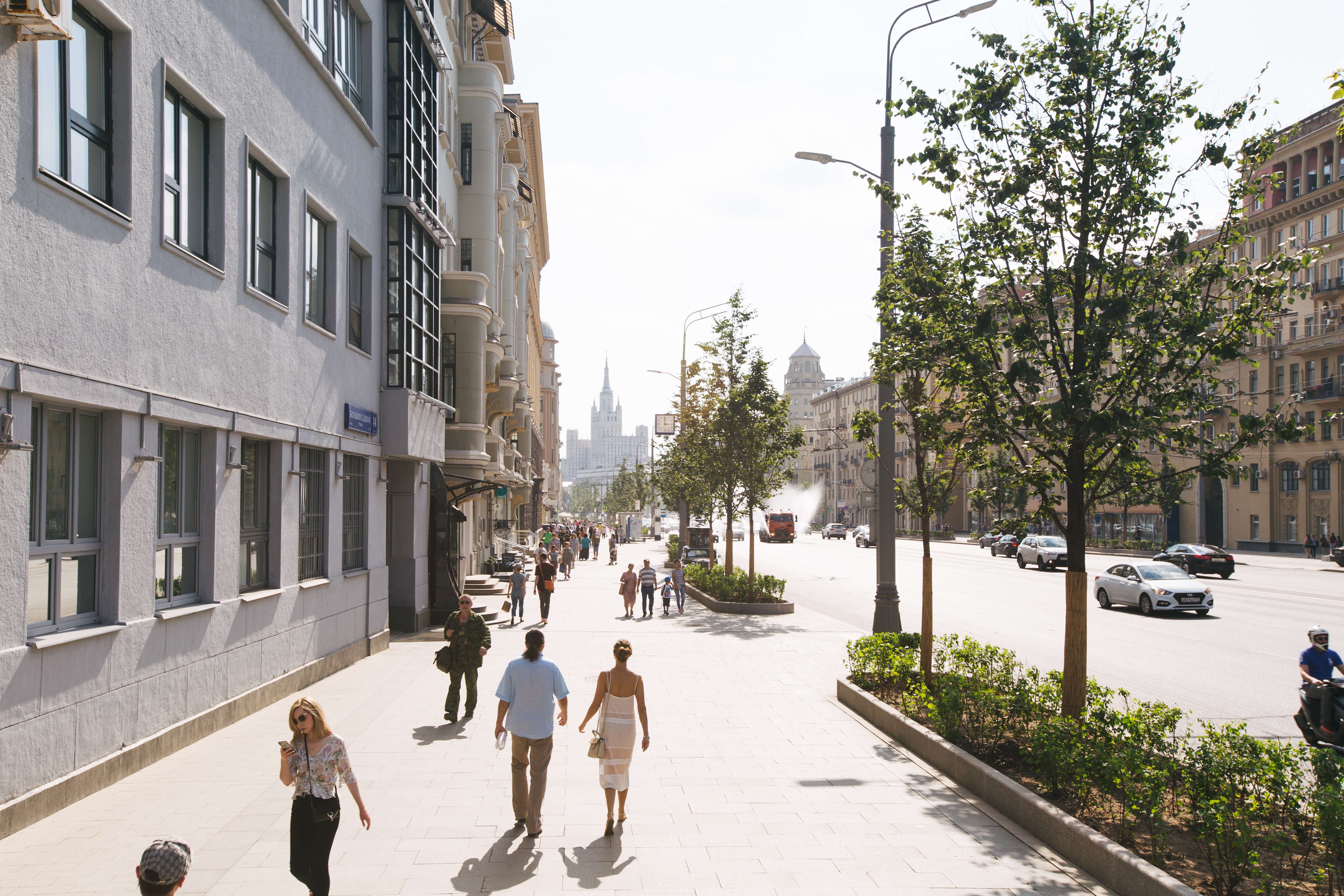

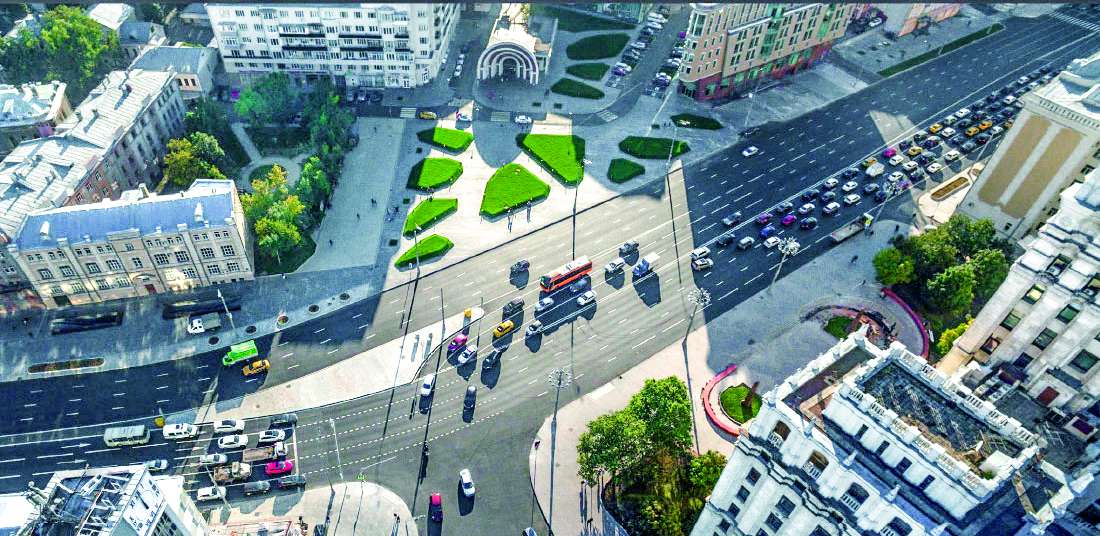


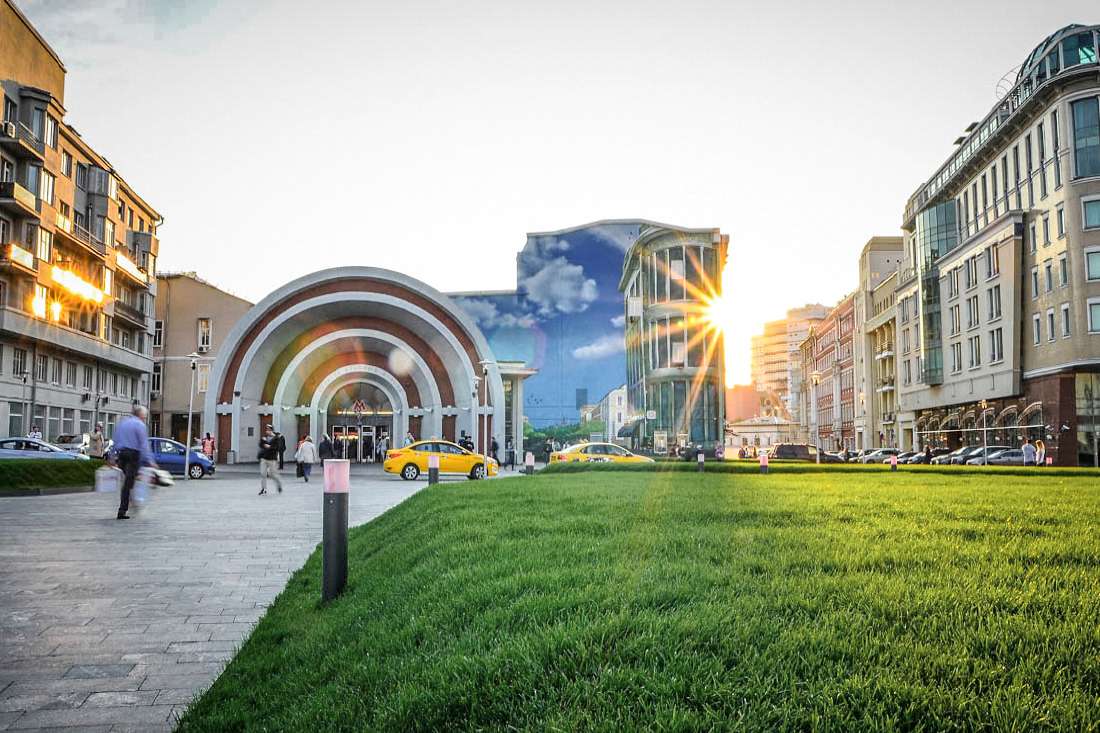

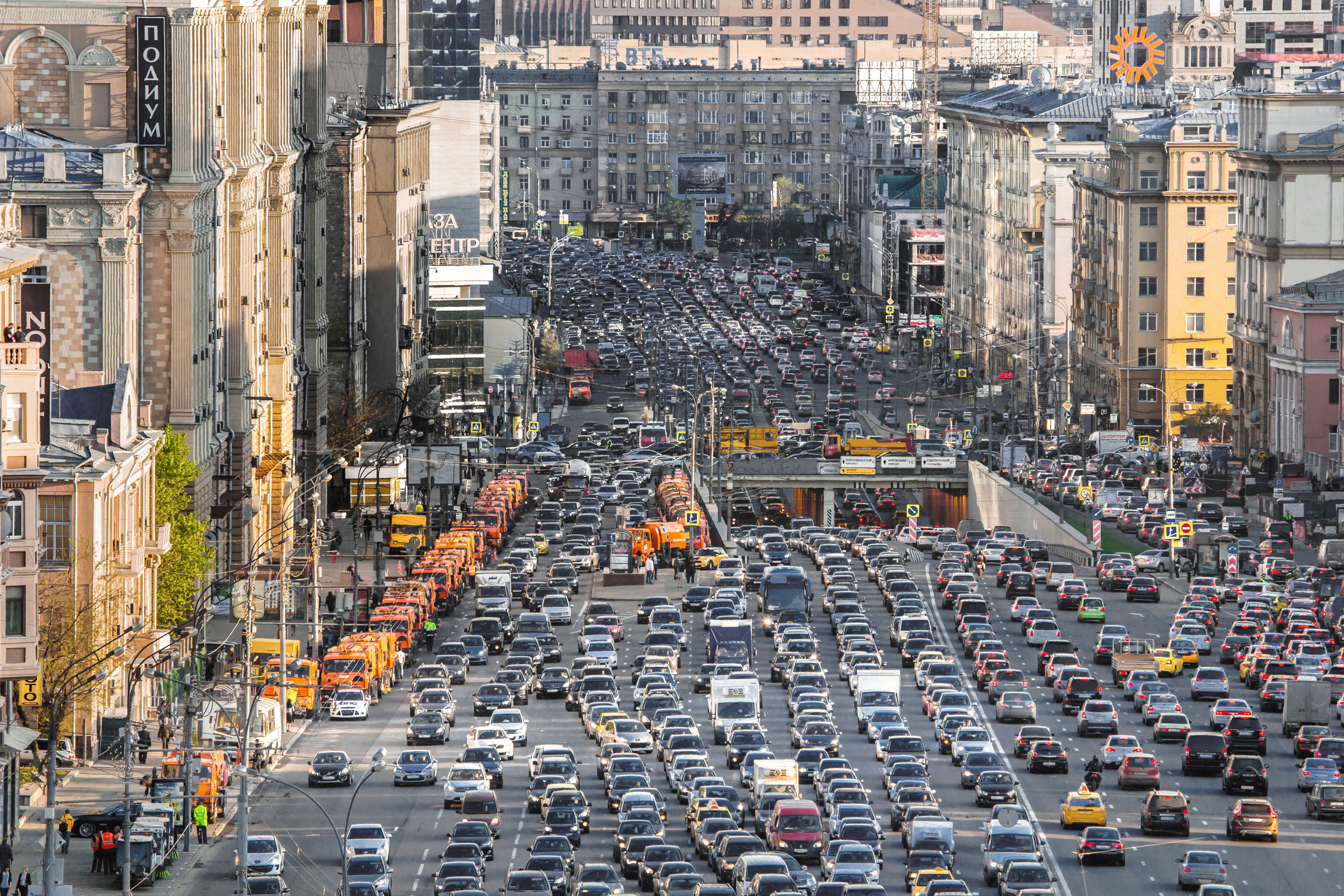
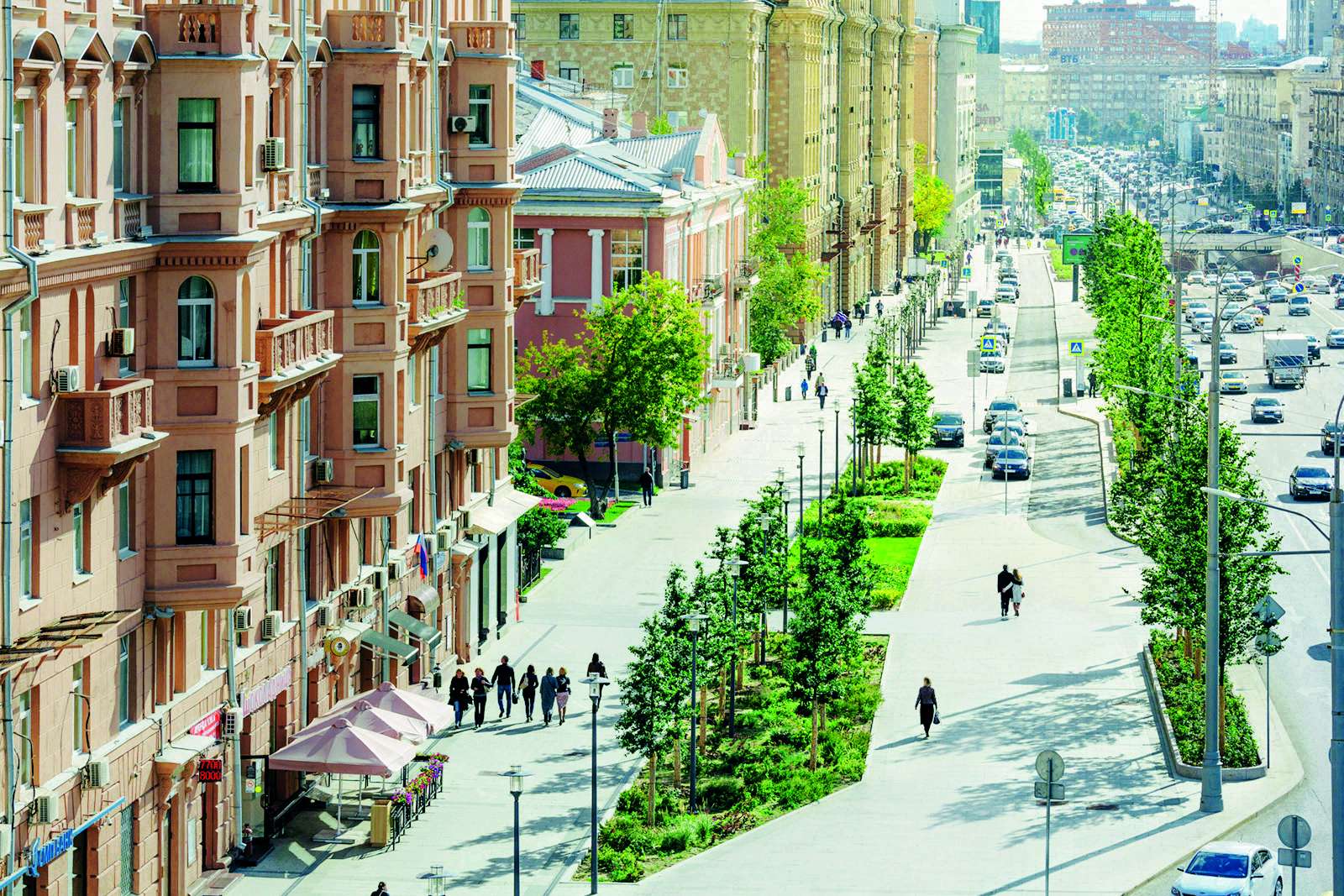
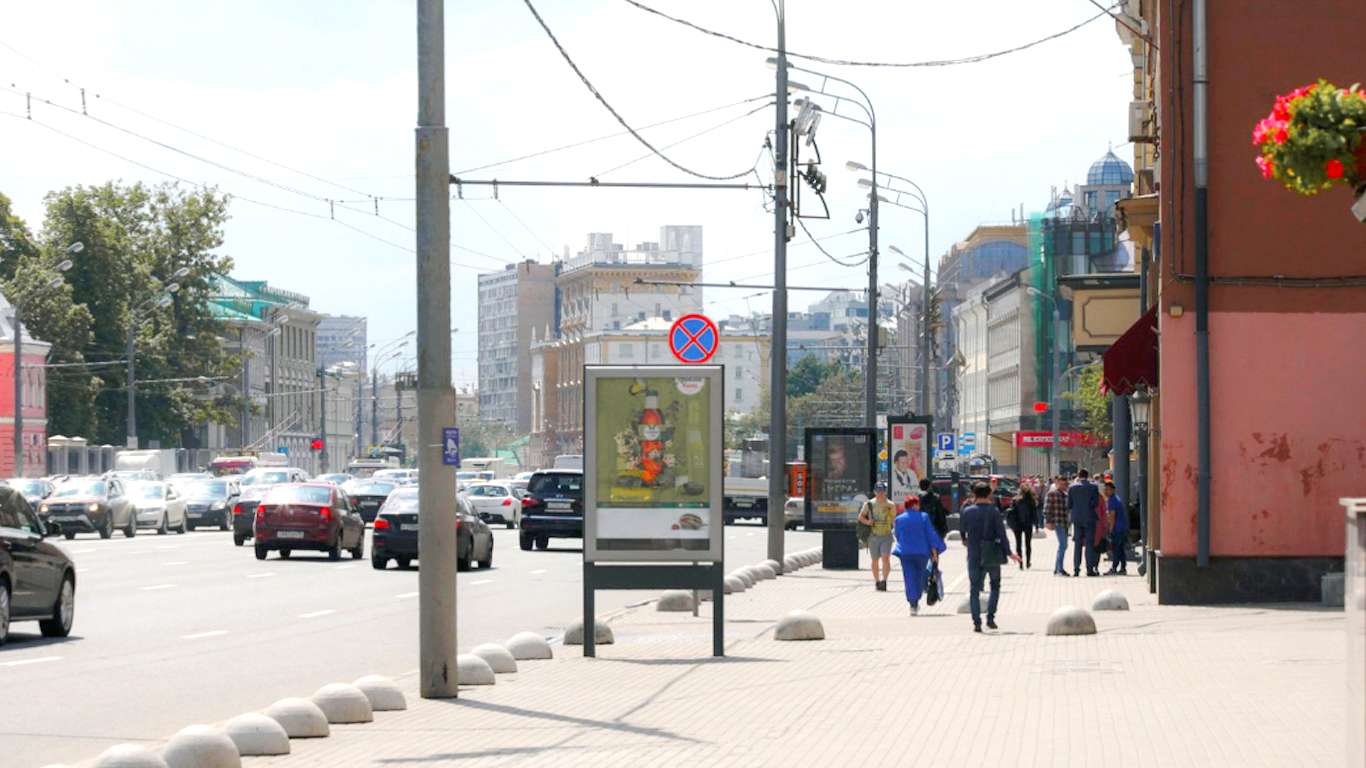
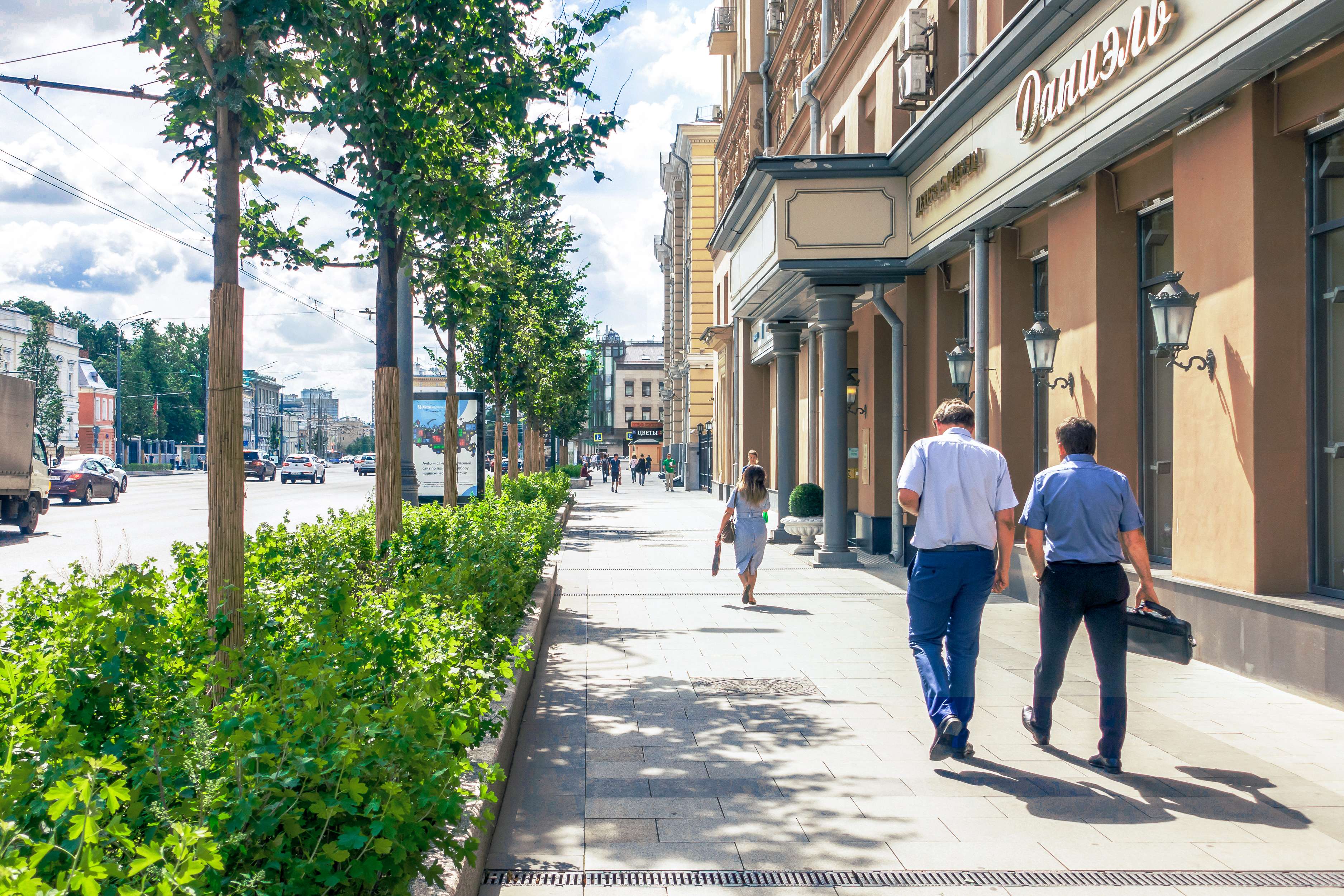
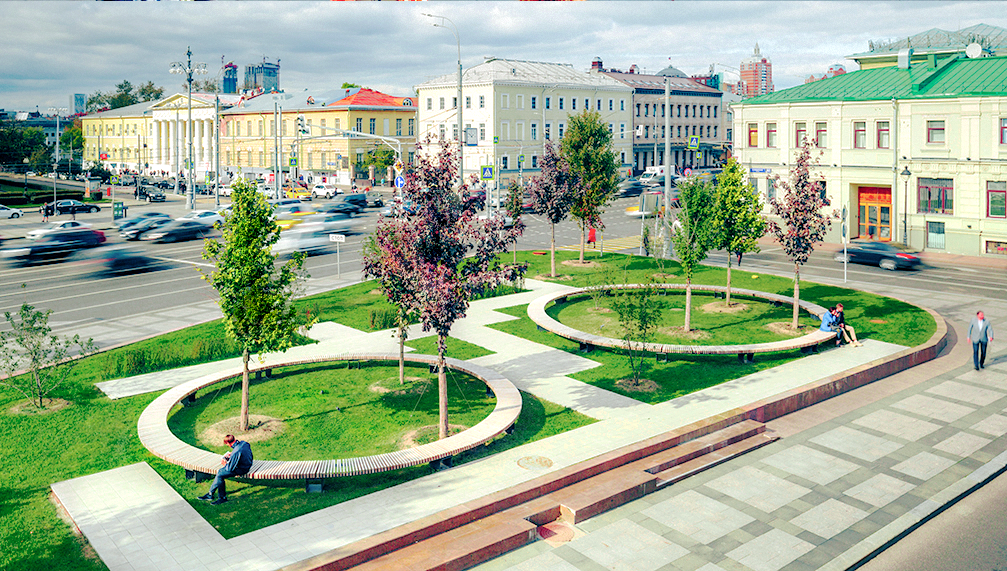
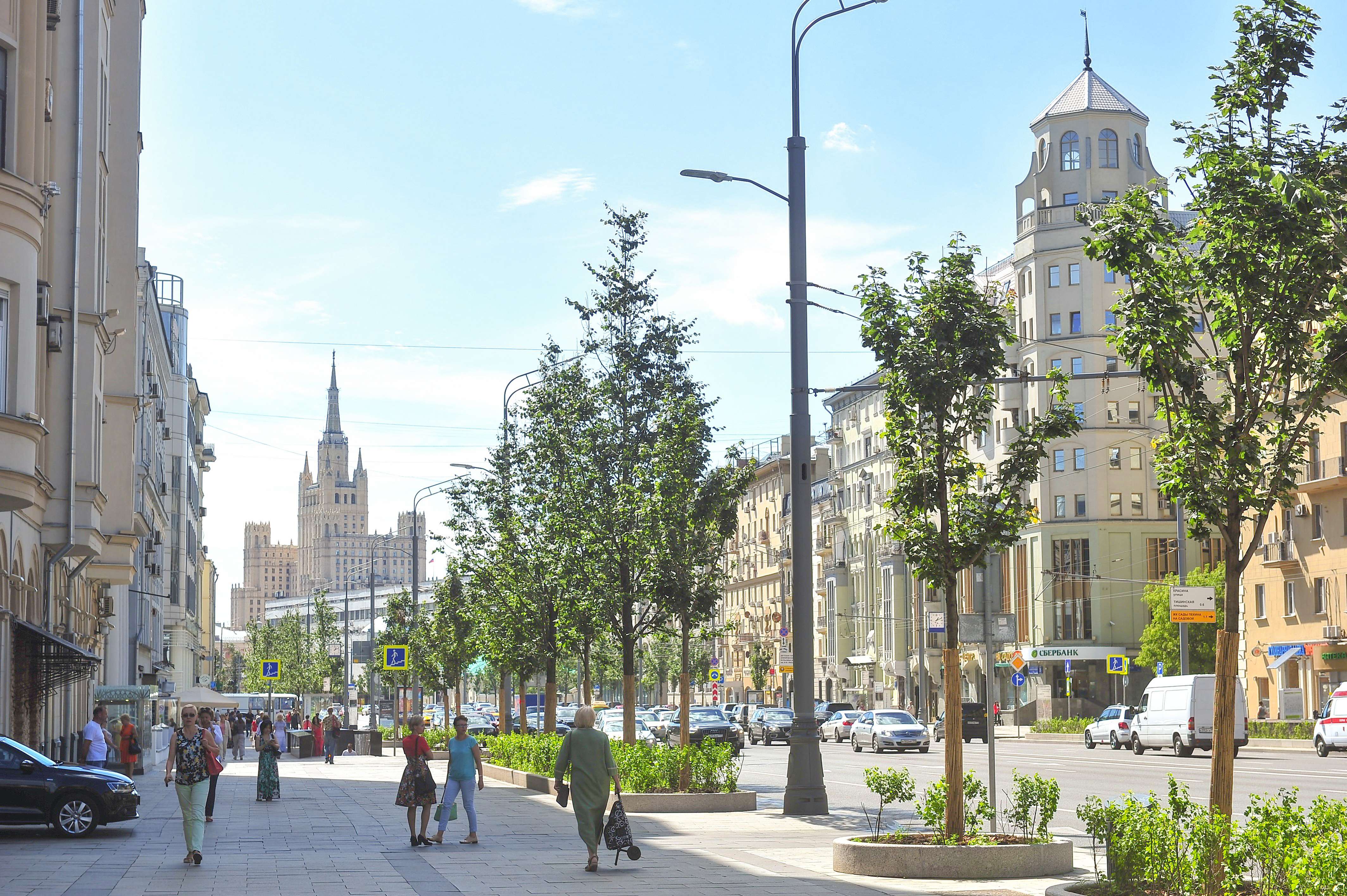


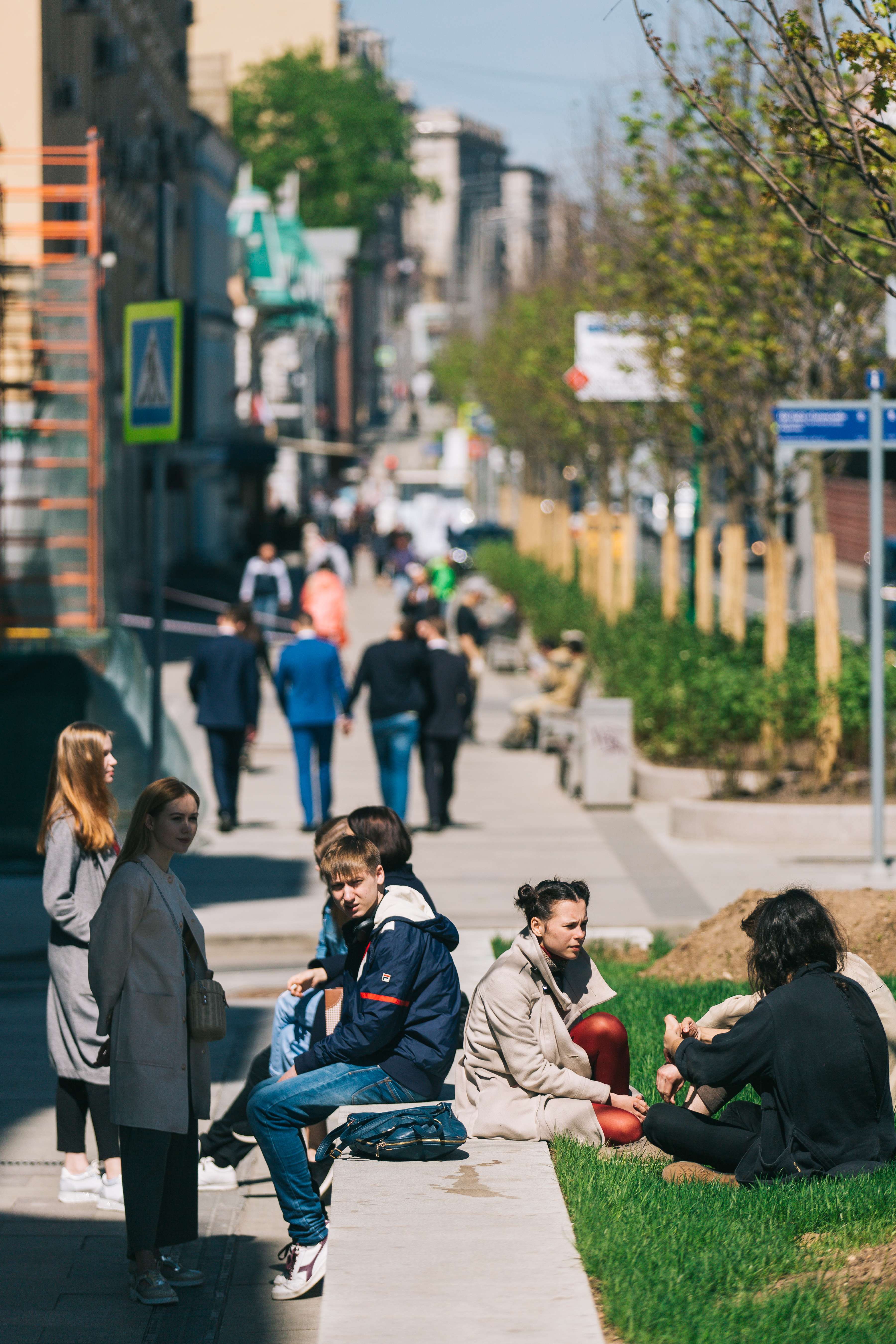
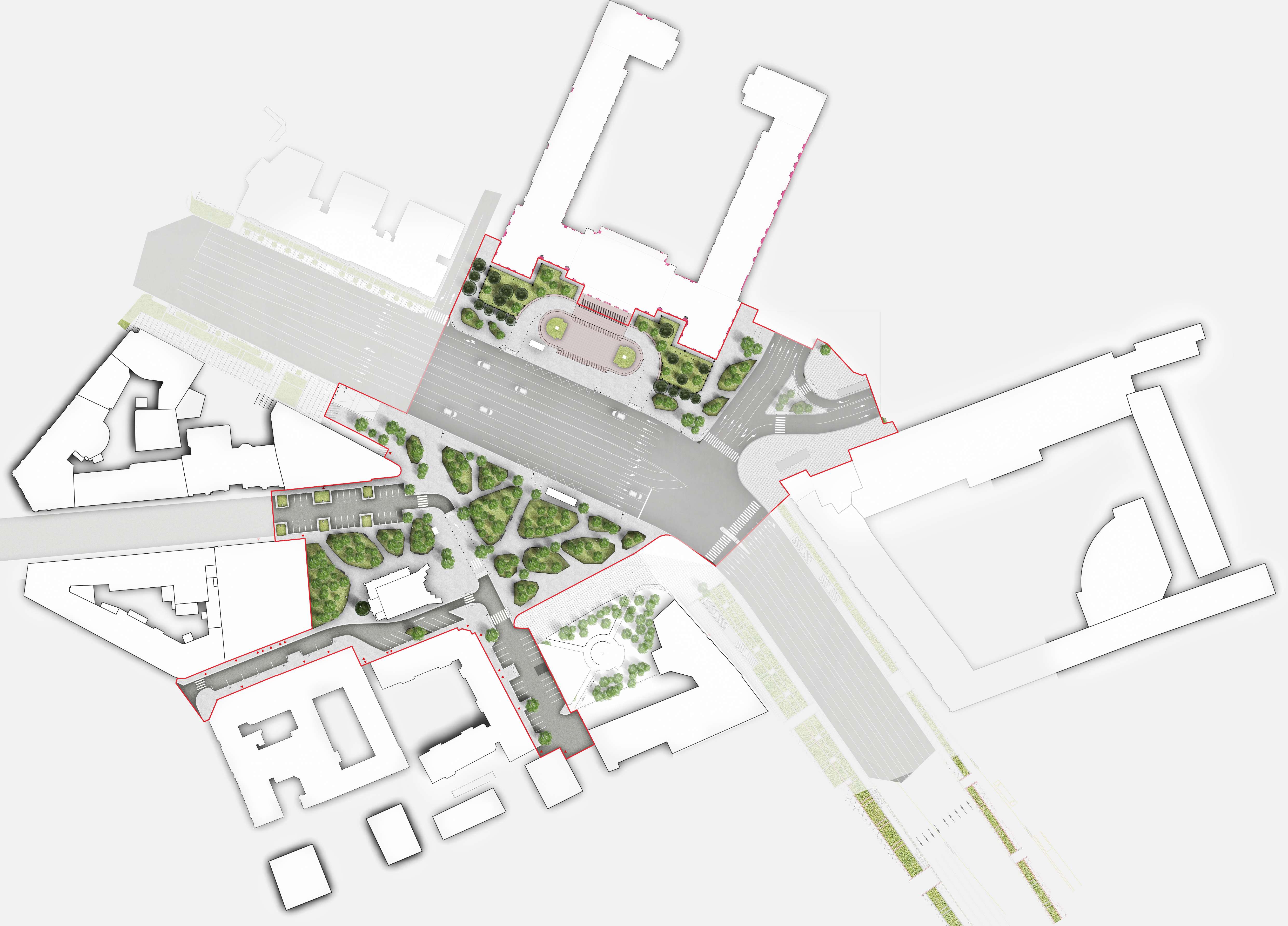
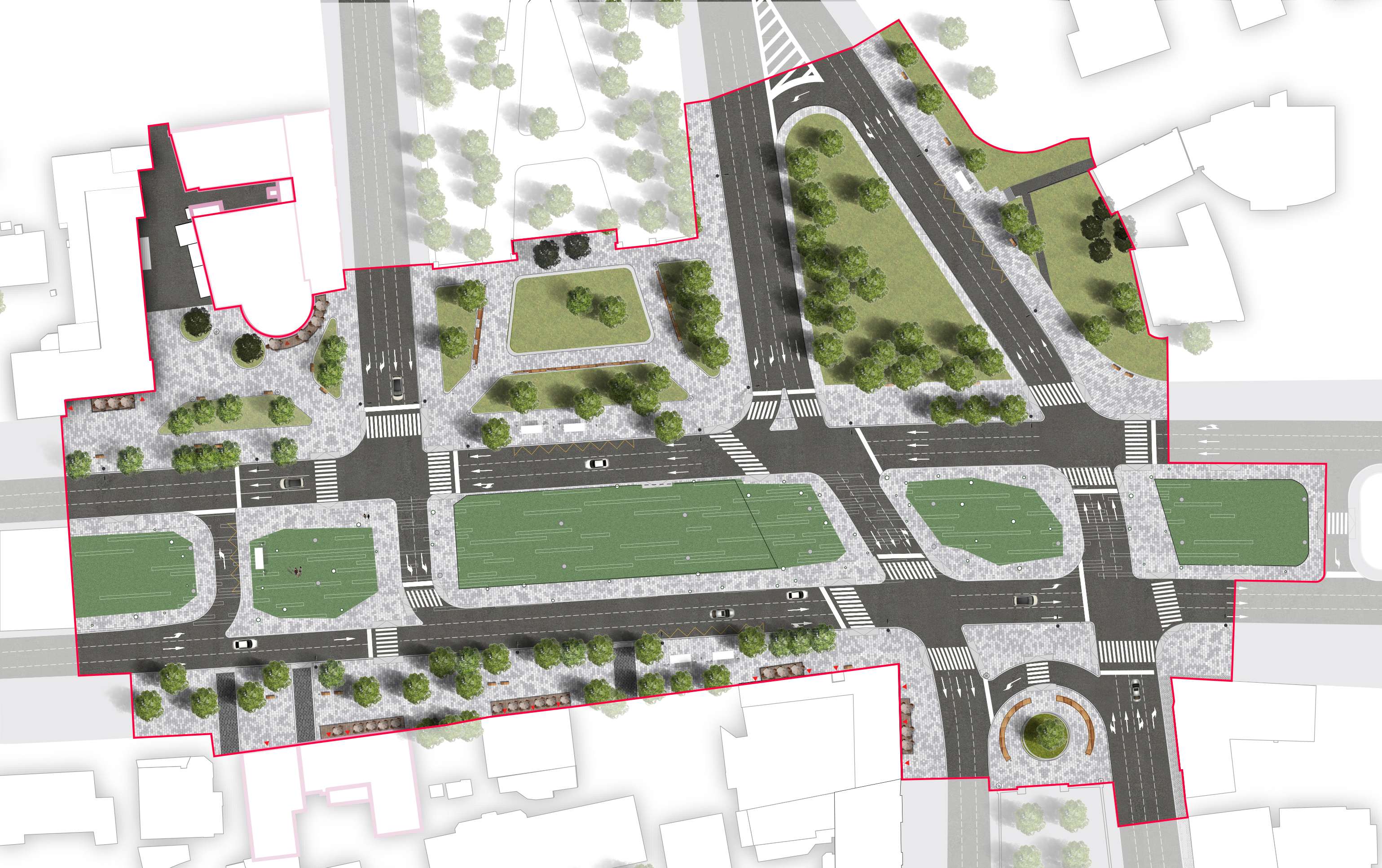
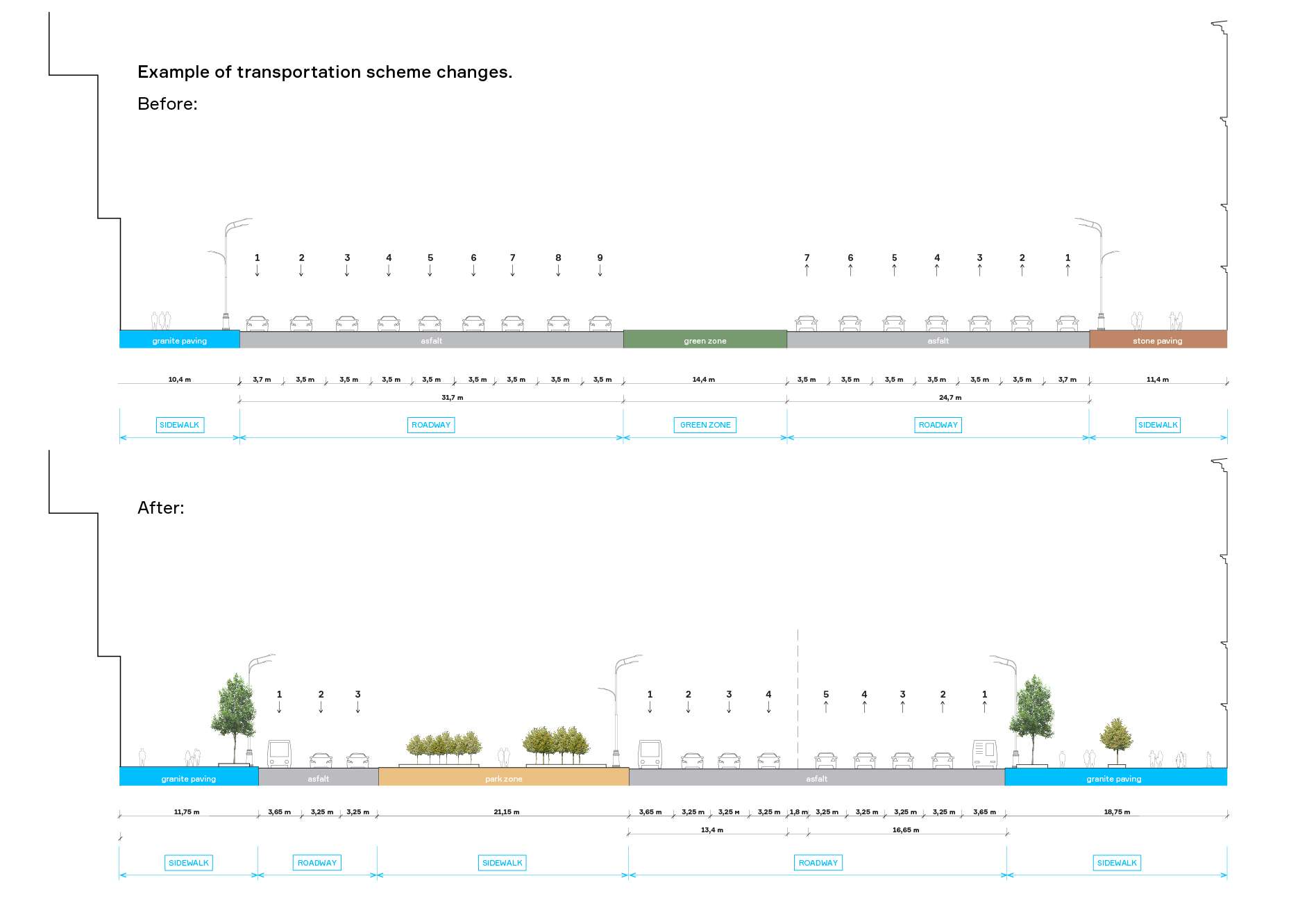
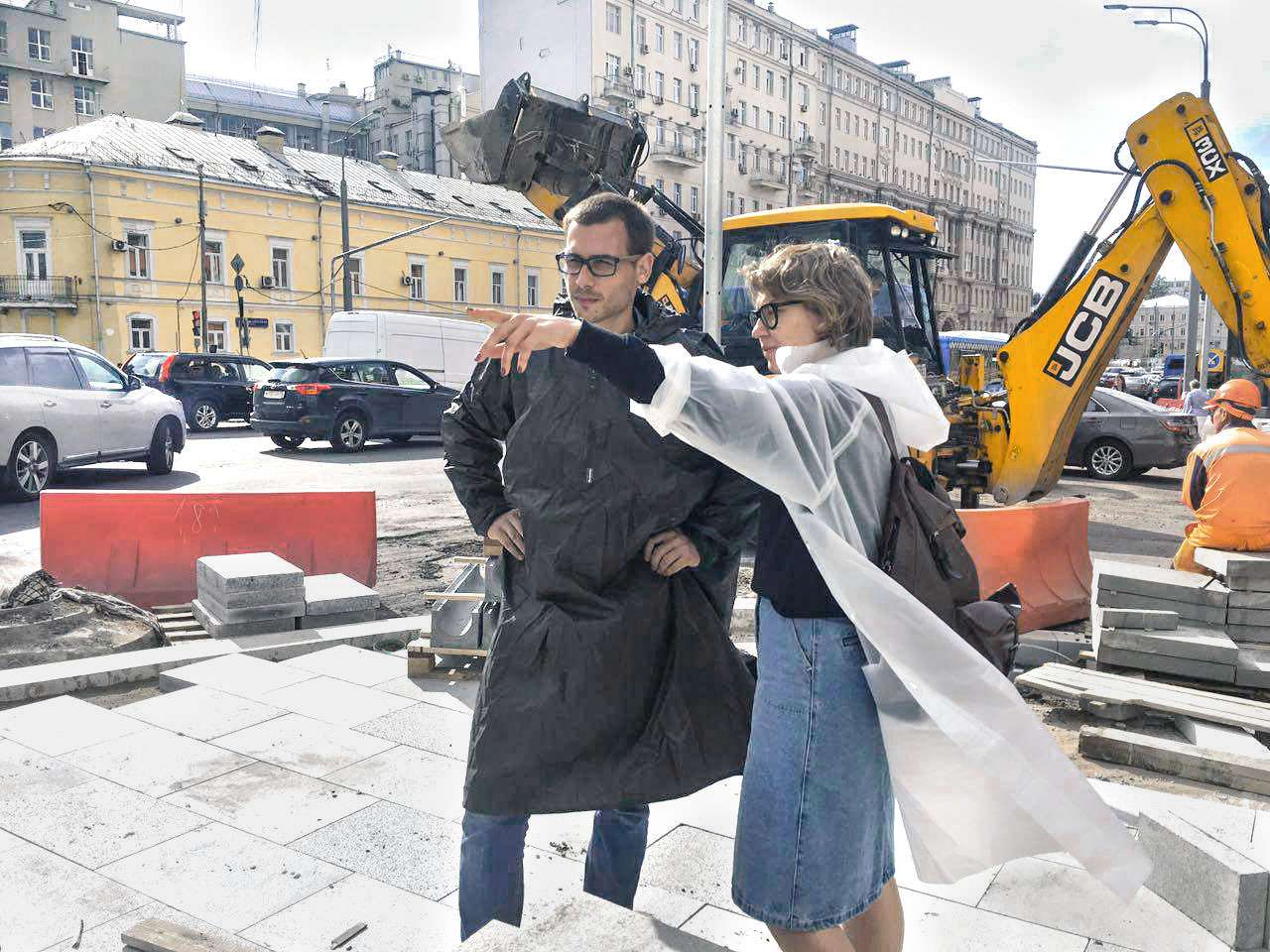
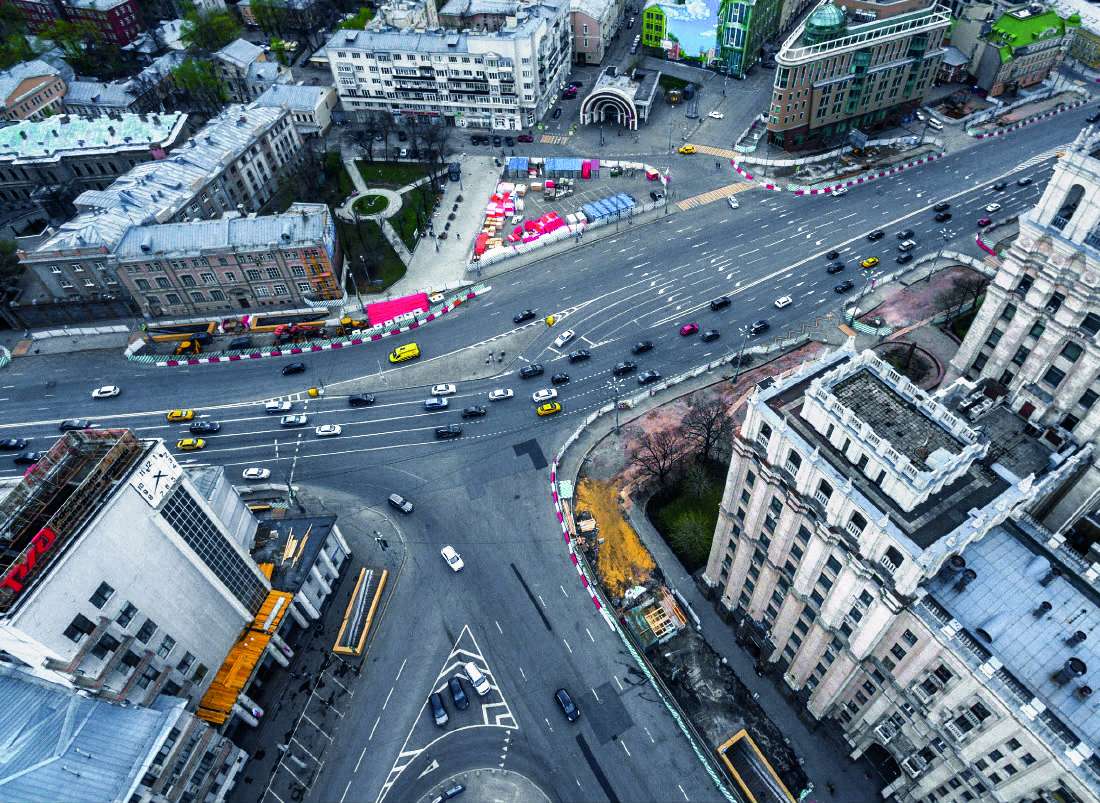
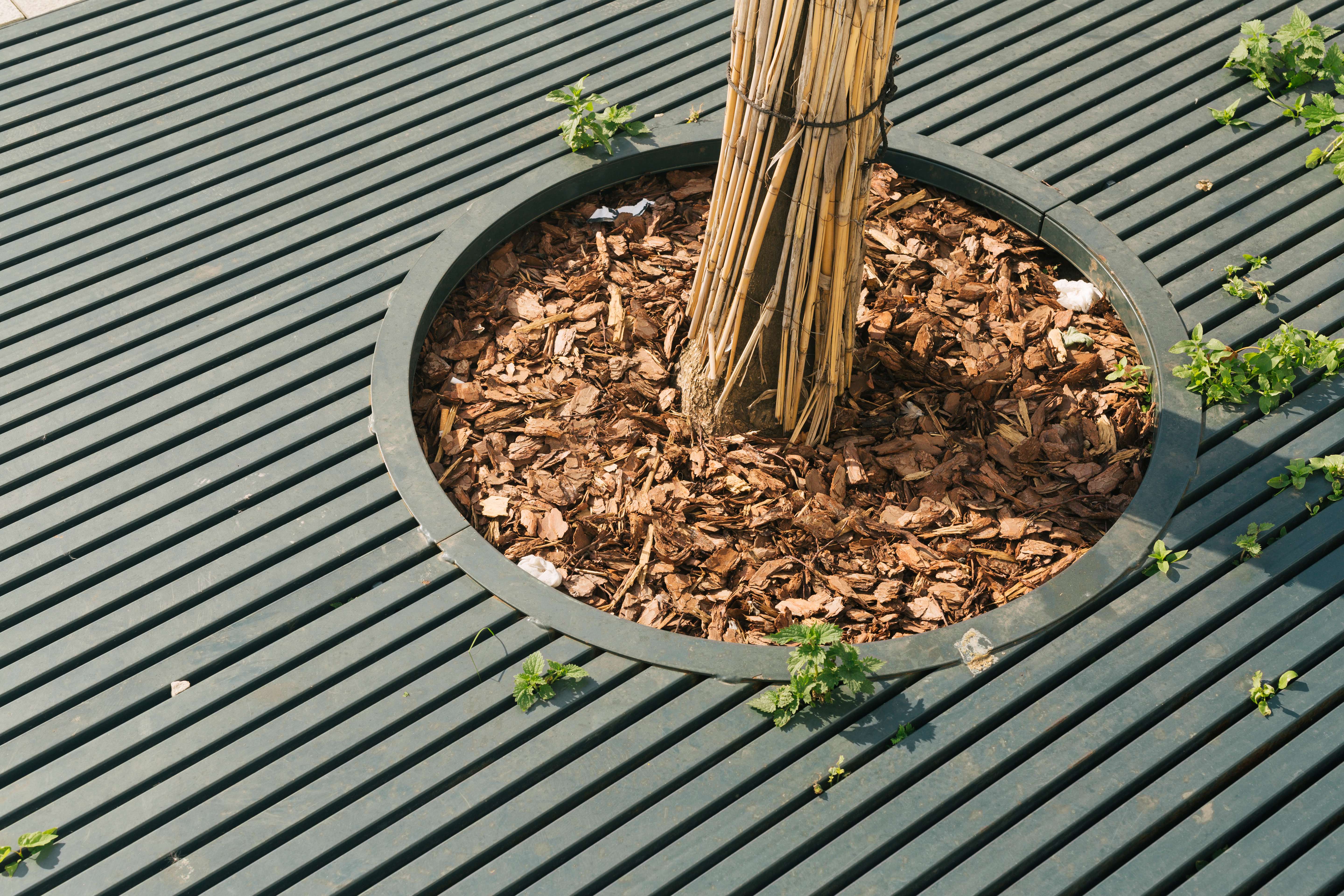
Garden Ring Moscow by Strelka KB
Bringing gardens back to Moscow’s Garden Ring
Previous state
The Garden Ring is not just a circular avenue surrounding central Moscow, but a unique space 15.6 kilometers in length, which connects different parts of the city. It follows a path corresponding to what used to be the city ramparts in the 17th century. After the fire of 1812 during Napoleon’s invasion of Russia, the road was decorated with gardens, but in the early 1930s it was deprived of its greenery under the Stalinist Moscow Master Plan and has been a six-lane highway ever since. During the years of the Soviet Union it was developed as a major transport highway with an aggressive automobile environment in the center of the city designed primarily for motorists. Underground crosswalks, though created to safely bring pedestrians from one side to the other, ended up sacrificing the best, sunlit portion of the city to traffic as well as breaking the visual connection between the two sides of the road.
Aim of intervention
The project of refurbishment of the Garden Ring is aimed to turning it into a full-fledged street of a contemporary metropolis, with a convenient and safe public spaces for pedestrians, as well as an efficient transport system for cars. The concept called “100 Gardens of the Garden Ring” is based on the desire to restore its historical heritage by giving high priority to greenery. Strelka KB also aimed to reintegrate two parts of the city – the microdistricts outside the Ring and the city center.
Description
The project drew together 19 architectural firms, ranging from star architects from all over the world to young local architects. The main principle of the project was to open up the creativity of young local talent with the support of Strelka KB acting as the technical consultant. Strelka KB created a brief for the reconstruction and developed the project, and then Strelka Architects adapted it for construction companies and invited international architectural bureaus as consultants to contribute ideas. The Garden Ring was divided into linear segments and iconic nodes. The nodes were formed where public uses had arisen previously, often spontaneously, creating fully functional public spaces. According to the brief the street was divided into different sectors: public transportation, automobiles, a technical zone, parking, pedestrian zone, ground floor zone. The project included several types of gardens that are suitable for different types of street space, including ceremonial gardens for iconic territories (mostly in the metro areas), as well as small islands of greenery. During 2016 and 2017, 111 hectares were renovated which included building of 13 new public spaces, 20 new crossroads, 8 new transportation lines, and planting of 2,880 trees which formed a natural ecological shield.
Assessment
Once turned back into a pedestrian-friendly street, the Garden Ring started to attract a more diverse set of businesses. Banks and institutional functions have made space for a greater number of food, retail, and service establishments. Large-scale planting created a stabilizing effect on the microclimate, minimizing road dust and generating oxygen. Pervious paving prevents flooding, improves drainage and lessens the heat island effect that asphalt can have since granite pavers absorb heat more slowly than asphalt. Two parts of the city have been reintegrated, as have been different groups of the population. Eighty-five percent of Moscow’s development is in microdistricts, which are distinctly separate from the city center. The improvements to the Garden Ring have made the center of Moscow more accessible to all.
Strelka KB is a multidisciplinary urban consulting company of 350 people working today in such spheres as city architecture, economics, anthropology, city design, and data with projects nationwide. The company operates in 360 cities of Russia and has built the network of 2,000 experts in 45 countries and 24 regions of Russia.
